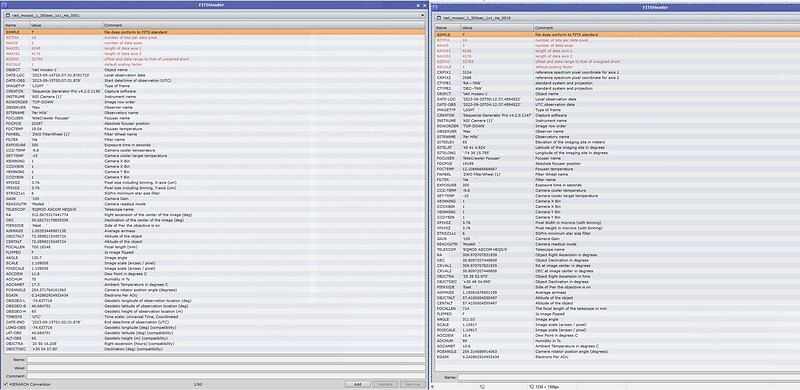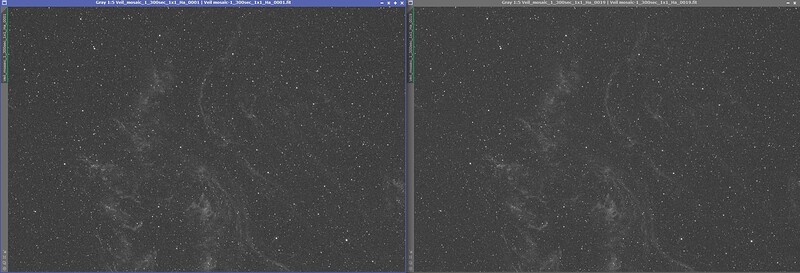Attached is a screenshot from PI showing the headers for images of the same region taken a week or so apart using SGP. The FITS on the left is for an image taken using v4.2.0.1136, and the right taken from v4.2.0.1147. The equipment and observing location remained the same; the only variable was the night of imaging, and the version of SGP.
As you can see, the ordering and fields of data in the FITS headers are wildly different. I noticed an issue when I loaded all the lights from the multiple nights into weighted batch pre-processing in PI, which among other things, plate solves and stacks the images after calibrating. If I use an image taken with the newer version of SGP as a reference image, it will not plate solve, and images will not stack (cannot find a pair of matching stars). Individual subs taken with the latest version also will not plate solve. However, anything taken with the earlier version of SGP will solve, and does work as a reference from for other images to stack against.
Here are the two subs that the FITS correspond to. Visually they are nearly identical so there is no reason one should solve and the other shouldn’t, from a visual standpoint.
The only thing I can come up with that’s different is the FITS header, and SGP version. Is there a bug with how SGP is writing FITS now that is causing this?

